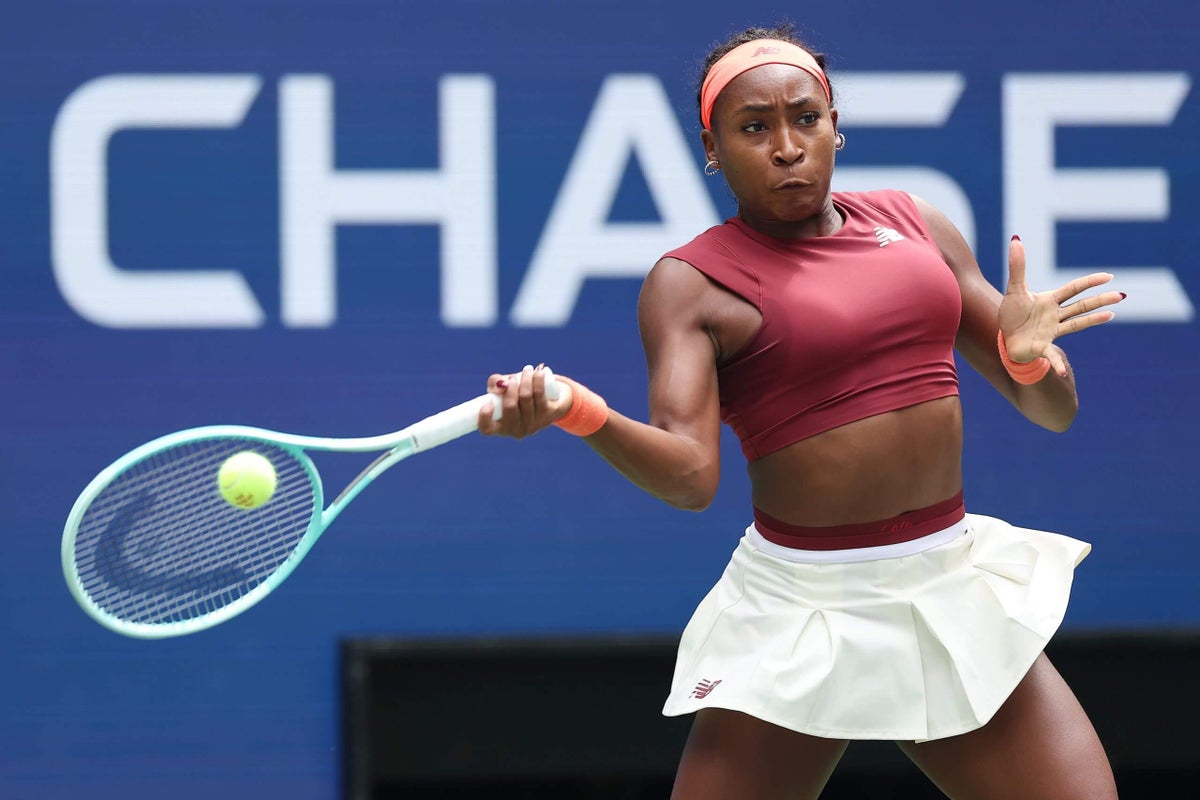Coco Gauff’s recent U.S. Open campaign ended with a fourth-round defeat against Naomi Osaka, highlighting the ongoing challenges with her forehand. Despite improvements in her serve, the forehand remains a critical area for development. This article delves into Gauff’s performance, the significance of the forehand and serve in tennis, and what the future holds for the young American star. As Gauff navigates her early 20s, the adjustments she makes now could define her trajectory in the sport.
The match against Osaka underscored the importance of addressing fundamental flaws. While Osaka appears to be regaining her top form, Gauff is in a phase of recalibrating her game. Her decision to work with a new coach just before the U.S. Open signals her commitment to long-term growth. This analysis explores the adjustments Gauff is making and the potential impact on her future performances.
Osaka’s Resurgence and Gauff’s Forehand Woes
Naomi Osaka’s victory over Coco Gauff at the U.S. Open highlighted both Osaka’s resurgence and Gauff’s ongoing struggles with her forehand. Osaka, a multiple Grand Slam winner, exploited Gauff’s forehand errors to secure a comfortable win. According to the original article, Gauff recorded 24 errors on her forehand, accounting for over 40% of the points Osaka won.
Osaka’s strategy was clear: target Gauff’s forehand. This exposed a critical weakness in Gauff’s game, particularly on her return of serve. The article notes that Gauff herself felt “discombobulated” by the contrast between her improved serving and poor returns. “Serving well and returning poorly, patching a weakness and losing a strength, had her ‘discombobulated,’” the article states.
Osaka’s ability to capitalize on this weakness underscores her tactical prowess and her return to form. After a period of managing her mental wellbeing and physical injuries, Osaka is now demonstrating the adaptability required to succeed in modern women’s tennis.
Gauff’s Serve Transformation with MacMillan
Recognizing the need for change, Coco Gauff hired a new coach, MacMillan, just days before the U.S. Open. This decision reflects Gauff’s proactive approach to addressing her weaknesses, particularly her serve. As the article points out, Gauff had been double-faulting excessively, making it imperative to refine her serving motion.
MacMillan’s coaching philosophy emphasizes the science behind the movements, focusing on getting the body’s joints into the right positions to generate power. Gauff expressed confidence in this approach, stating, “There’s facts and science behind it instead of someone just telling you to do this, and you just do it.”
The immediate results were promising. Gauff reduced her double faults and increased her serve speed during the tournament. By the end, she was averaging 104 mph on her first serve, a significant improvement from her opening match. Although there is still work to be done on her serve, the initial progress is encouraging.
The Persistent Forehand Challenge
Despite the improvements in her serve, Coco Gauff’s forehand remains a major concern. The original article highlights the inconsistency of her forehand, describing it as going “in and out from game to game and match to match.” This inconsistency is particularly evident on her return of serve, which was a significant liability against Osaka.
Unlike the serve, which is a closed skill, the forehand is an open skill with numerous variables. As the article explains, “They are an open skill: with dependent variables out of the player’s control.” This makes the forehand more challenging to master, requiring adaptability to different velocities, spins, and court positions.
Gauff’s ability to restructure her forehand in practice is only part of the solution. She must also be able to execute it effectively in match conditions, adapting to various scenarios and ball types. The journey to improve her forehand will require patience and persistence.
Learning from Past Attempts
Coco Gauff’s efforts to improve her game are not new. Last year, she worked with another expert to fix her forehand and serve, achieving promising results in Asia and at the WTA Tour Finals. However, those improvements largely dissipated when the season resumed outdoors. The article points out, “But when the season resumed and tennis went back to being an outdoor sport, the improvements largely fell apart…”
This experience underscores the importance of sustained effort and adaptability. Gauff’s current approach appears to be more focused on long-term development, recognizing that lasting improvements take time and consistent effort. The key is to integrate the changes into her overall game, ensuring they hold up under the pressures of competitive play.
Looking Ahead: The Long Game
Coco Gauff is taking a long-term perspective on her development. With a training block scheduled before the China Open, she has the opportunity to solidify the changes in her serve and continue working on her forehand. Gauff acknowledges the need for patience, recognizing that many players achieve their greatest success in their mid-20s.
Gauff’s willingness to make changes and her commitment to improvement suggest a bright future. While her U.S. Open performance highlighted areas for growth, it also demonstrated her resilience and determination. The original article quotes Gauff as saying, “If I can make that same jump of improvement, it’s a lot to be excited for the future.”
Final Thoughts
Coco Gauff’s U.S. Open journey underscores the importance of continuous improvement in professional tennis. Her efforts to refine her serve and address her forehand challenges reflect her dedication to long-term growth. The insights from her recent matches provide valuable lessons as she prepares for future competitions. By focusing on sustainable progress and maintaining a strategic approach, Gauff aims to make significant strides in her career.
As Gauff moves forward, her ability to integrate these changes into her overall game will be crucial. The blend of technical adjustments and mental resilience will define her success. While the path ahead may present challenges, Gauff’s commitment to evolving her game positions her for a promising future in tennis.

Leave a Reply